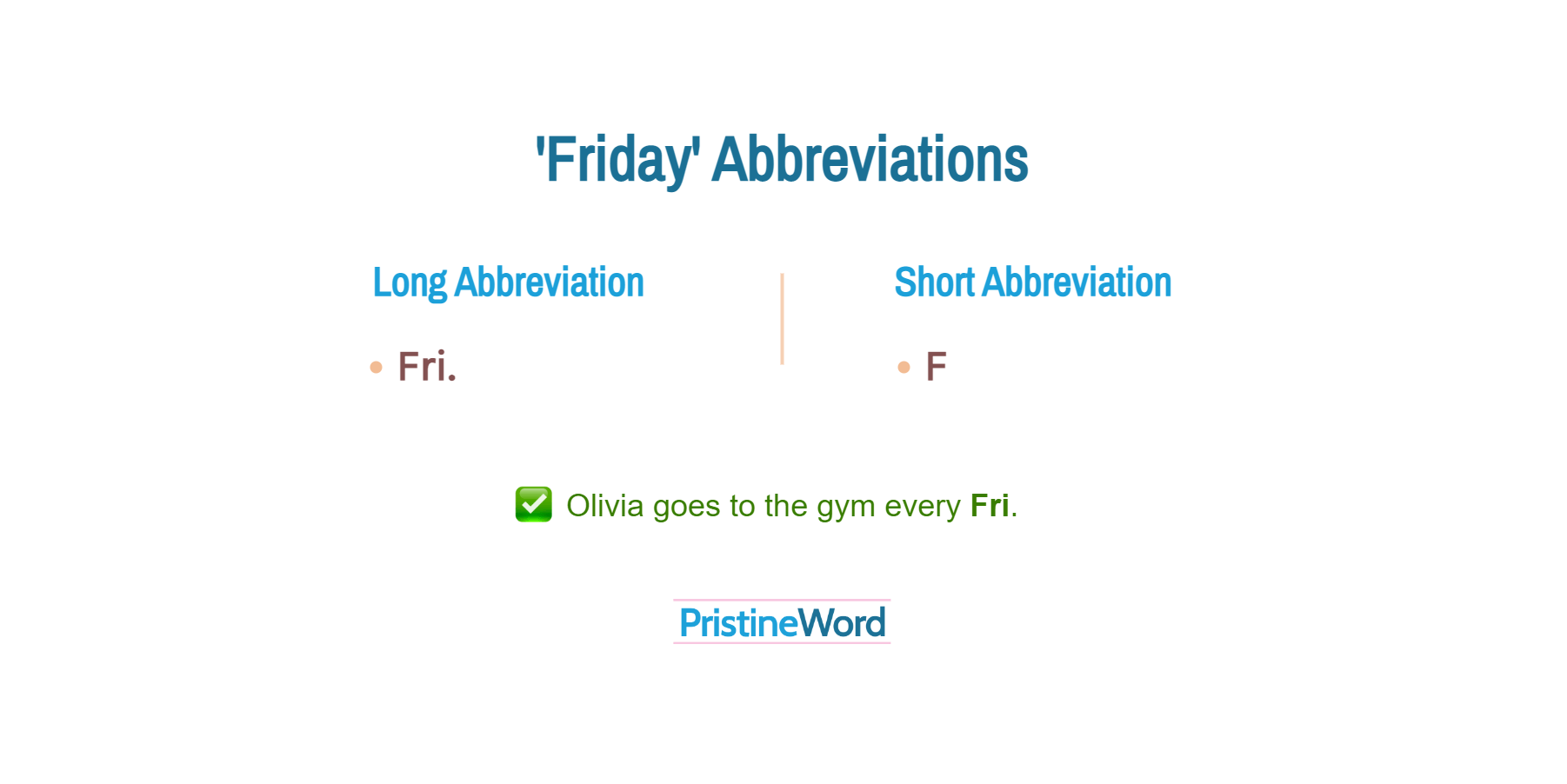There are two ways to abbreviate "Friday": Long abbreviation (Fri.) and Short abbreviation (F)
There are two common ways to abbreviate "Friday":
-
Long abbreviation (Fri.)
She has a doctor's appointment scheduled for next Fri.
-
Short abbreviation (F)
Strategy meeting this F
While these abbreviations are quite common in American, British, and Australian English, we recommend using the shortest form only if space is limited, for example, to write quick notes or use diagrams, tables, or charts.
You can see my new collection this Fri.
Brainstorm meeting next F
When using these abbreviations, ensure it is obvious to readers which day you are referring to.
Open for business this F.
Open for business this Fri.
Why do we put a period after "Fri."? MLA style recommends using a period when an abbreviation ends in a lowercase letter. Conversely, if the abbreviation is composed exclusively of capital letters, such as F, we typically omit the period.
Her birthday’s on a Fri./F this year.
Be also aware that we always capitalize Friday, even if this word is abbreviated.
I'll see you on Fri.
I'll see you on fri.
When writing the rest of the days of the week, follow the same abbreviation strategy:

